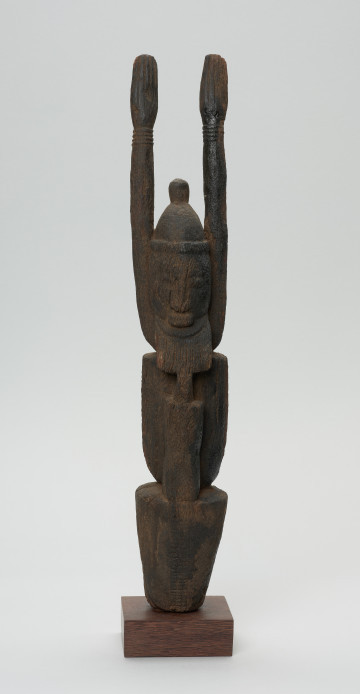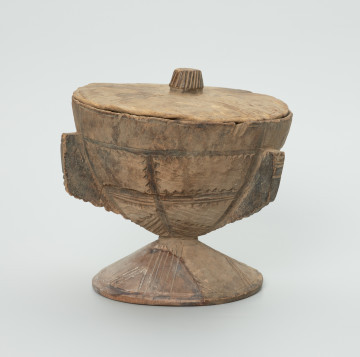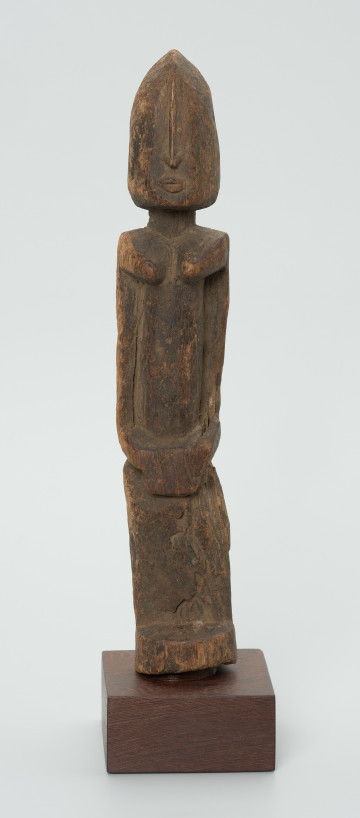
Figure -hogon
między 1901 — 1950
National Museum in Szczecin
Part of the collection: Collection of Dogonian art
The figurine depicts Hogon, the priest of the Lebe cult, who often also serves as the chief of a village or group of villages. The word hogon means fire or flame in the Dogo-so language. The cult of Lebe is a cult of life, responsible for the vegetation of plants, so Hogon must avoid all contact with death. He is not allowed to participate in funeral rites or consume food sacrificed on ancestral altars. He is a representative of the Sun and must always wear footwear. If he were to put his bare feet on the ground, he could burn the village, the crops, and the whole earth. It is not only his feet that are dangerous; his whole-body burns, which is why it is forbidden to touch him or even shake his hand in greeting. The Dogon believe that a snake called Lebe peeps into Hogon's enclosure and licks the priest's skin at night. The snake's saliva brings him relief and gives him the strength he needs to oversee the proper functioning of the world.Hogon is chosen from among the oldest men of the family. He performs the function of the ruler of the land and settles disputes connected with farming. He is the authority in matters of religion. He lives in a ginna house built by the village founder, owned by the whole community. He never leaves his homestead. When he wants to communicate a decision or other information to another Dogon, he uses his assistant Hogon Titiyayne. The priest's costume of the Lebe cult consists of sandals symbolising the Ark of Nommo, long trousers, a long tunic and a round, red cap plaited in a spiral, as it reflects the movement with which Amma created the universe. An important ornament, a sign of Hogon's position, is a pendant called Lebe duge, hung around his neck. Hogon holds his position until his death.
Ewa Prądzyńska
Author / creator
Dimensions
cały obiekt: height: 17,5 cm, width: 3,5 cm
Object type
figure
Creation time / dating
Creation / finding place
Identification number
Location / status

między 1901 — 1950
National Museum in Szczecin

między 1951 — 2000
National Museum in Szczecin

między 1951 — 2000
National Museum in Szczecin
DISCOVER this TOPIC
Castle Museum in Łańcut
DISCOVER this PATH
Educational path